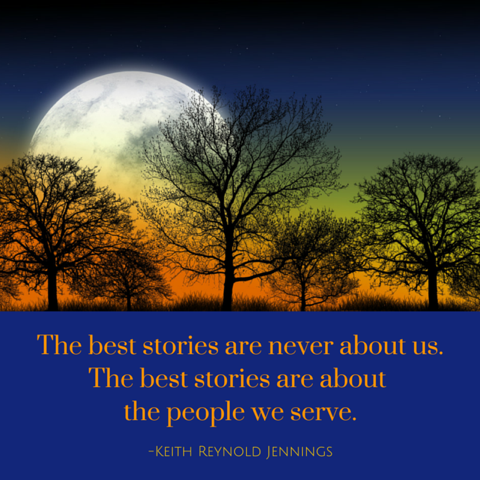“Hello Keith!” his email began. “I am trying to take my business to the next level and would like to pick your brain about some ways I could tell my story better.”
“I need your help,” she said. “I am making a presentation to my company’s executive team and I would like to use storytelling to get buy-in.”

Now, re-read those two inquiries.
Do you notice how the focus is on them, not the people they serve?
Almost every time someone reaches out to me, their initial motive is to use storytelling techniques to tell their story.
I call this “expressive storytelling.” With expressive storytelling, you want to tell your story in a way others will hear it.
But there’s one big problem…
Others aren’t interested in your story. They’re interested in their story. And stories of others like them.
In business, you are hiring stories to do specific jobs for your business and your clients. And, often, that job is to move people toward a specific action.
The stories that best do this job — the job of engaging and moving people — are connective stories.
Connective stories are never about you, your company or the stuff you sell.
Connective stories are for and about those you serve.
If I were to offer you a choice between these two stories, which would you choose:
- I’d like to tell you my story
- I’d like to tell you about someone facing a situation like the one you’re facing right now
That second story is more appealing to you, isn’t it? That’s because through that story, you and I can connect around a shared purpose (i.e. your wants and needs).
When it comes to storytelling in your business life, repeat this mantra daily:
The best stories are never about us. The best stories are about the people we serve.
(Image by Margie Deeb)